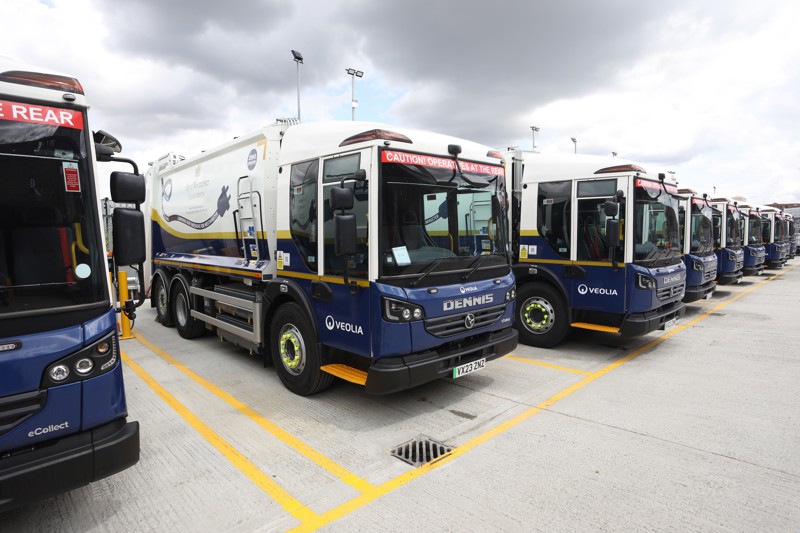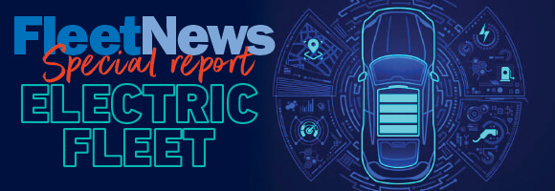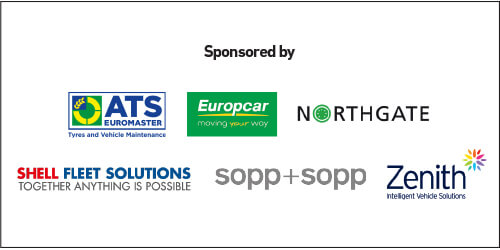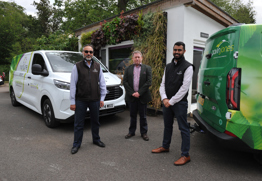This feature was taken from our latest Electric Fleet report. Click here to read it.

Westminster City Council has invested £20 million in 45 new fully-electric refuse trucks, the vast majority of which will be charged by burning the waste they collect.
Thirty-eight of the electric vehicles (EVs), which are operated by the local authority’s environmental partner Veolia, will be based at its fully-electric depot in Landmann Way, near South Bermondsey.
They will charge their batteries by drawing electricity from the adjacent South East London Combined Heat and Power (SELCHP) facility, which burns waste collected from homes and businesses in Westminster.
The facility creates 265GWh of electricity, supplying enough juice to the grid to power 48,000 homes, and generate heat for a local district heating scheme serving more than 2,800 homes.
More than 50% of the electricity generated by SELCHP qualifies as renewable under the Renewable Energy Guarantees of Origin (REGO).
It is connected to the depot through a private wire, which enables the facility to charge 54 vehicles simultaneously through a smart charging infrastructure.
This allows the vehicles to charge at non-peak times to maximise local resources and strengthen the grid’s resilience.
Each of the 26-tonne electric refuse collection vehicles (eRCV) reduces CO2 emissions by up to 89% compared with the diesel it replaces, leading to the Landmann Way depot reducing its carbon emissions by 2,000 tonnes each year.
“We’ve created a really virtuous circle that operates 365 days a year,” says Paul Dimoldenberg, cabinet member for city management and air quality at Westminster City Council.
“We collect the rubbish, we burn it and we use electricity from the burning to power our EVs.”
The Landmann Way depot has 30 different charging units, the majority of which are dual chargers.
It is also home to 16 street collection vehicles, which are smaller electric ‘cage’ vehicles and e-cargo bikes.
The council will gradually replace its entire 80-strong RCV fleet in the biggest decarbonisation programme of its kind by a UK local authority.
Increased efficiency
"The vehicles based at Landmann Way already took the black bag waste from Westminster residents to the energy facility next door, where it was burned,” says Briony Bendle, municipal strategy manager at Veolia.
“We thought about how we could make our operation even more efficient and one way was to build a private wire from the energy recovery facility to the depot itself.
“Essentially, that means the electricity is supplied directly from the plant into the chargers at the depot and therefore into the vehicles, so it creates a circular economy solution.
“What was great is that the SELCHP is an asset that was already here, and the black bag waste it takes would otherwise have gone to landfill, so we’re just maximising the efficiency of it.
“It also meant we didn’t have to do some of the more costly work of connecting to the grid.”
The smart charging software used at the depot means the charging load can be balanced with other demands on the electricity grid.
“We’re not necessarily charging all the vehicles at once. We’re sort of drip feeding them charge sporadically throughout the night, and that means we can draw down on less electricity taken from the plant itself, so it’s an efficient solution.”
The roots of the electrification initiative began in 2019 when Westminster City Council, in partnership with Veolia, introduced the UK’s first fully eRCV in 2019 when it retrofitted an existing vehicle to become zero-emission.
The following year the local authority stepped up its testing by operating the vehicle with heavier cargo loads, evaluating charging capacity, extending driving distances and conducting double shifts: these entailed collections from 6am to 2pm, a brief recharge at the depot for two-to-three hours, and then another eight-hour shift.
In 2021, the council initiated trials of two e-cargo bikes adapted for on-street waste collection.
Their electric powertrain helps the rider to manage the added weight of the tipping body and its load.
Their compact size meant they could access pedestrian zones and confined spaces which were not accessible by vans or trucks, while they cab also accommodated a load of up to 150kg.
The conventional barrow which was traditionally used in these areas has a 20kg capacity.
Westminster City Council announced it plans to electrify its RCV fleet in 2021.
Value of trials
“We needed the trials to prove an electric fleet would work before allowing a project of this scale to go ahead,” adds Bendle.
The transition meant extra care had to be taken to plan the depot so it could house all the infrastructure and vehicles without compromising operations.
“With the infrastructure, you probably need a bit more space for the electric fleet than our diesel one,” she says.
“That’s why it’s taken a while to design the depot to make sure we did it properly and we got the chargers in the right place, with the right cable lengths to get to the vehicles.”
The trials also allowed Veolia to become familiar with the vehicles as well as developing a close working relationship the eRCV manufacturer Dennis Eagle, as improvements were made along the way to ensure they were fit for purpose.
The trucks have a range of about 80 miles, while their daily duty cycles are typically between 50 and 60 miles.
“They are coming back with quite a bit of battery left, so they more than cover what is needed.
“Part of the efficiency of the initiative is that the depot is right next door to where they tip, so they don’t have far to travel after that,” says Bendle.
“From an operational perspective, the eRCVs have been only really beneficial. The waste they collect is exactly the same and the drivers have been very positive about the new vehicles.”
Dimoldenberg adds: “It’s real win-win. Our drivers used to experience really noisy cabs, but I was in one of the vehicles earlier and the noisiest thing is the sound of the air conditioning, not the engine.
“Now they can go home having done a day's work, not with a headache, enjoying the rest of their day.
“Outside, the vehicles are also much quieter than the diesel ones, if not silent, and are working either early morning or sometimes late at night, typically in the West End, so residents aren’t woken up early or kept awake late at night.
“It’s a really beneficial move right across the board.”

Our latest Electric Fleet special report will help organisations take the next step to fully decarbonise their fleets, including:
- The new rules which slash EV charging infrastructure costs for fleets
- Importance of looking after charging cables
- Increase EV sustainability with a battery energy storage system
- Learnings from a wireless charging trial
- Electric vehicles coming soon























Login to comment
Comments
No comments have been made yet.